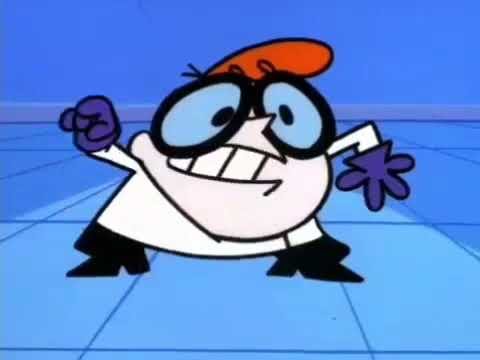The Evolution of Dexter’s Laboratory
Dexter’s Laboratory first aired in 1996, created by Genndy Tartakovsky for Cartoon Network. The show follows the adventures of Dexter, a young boy genius, as he navigates the challenges of science and sibling rivalry in his secret laboratory. With its blend of humor and science fiction, Dexter’s Laboratory quickly became a staple of 90s animation.

Despite its initial success, some viewers argue that the show’s quality may not have aged well compared to modern animated series. Critics suggest that Dexter’s Laboratory lacks the depth and complexity seen in contemporary cartoons, raising questions about its lasting impact on the animation landscape.
Character Development and Storylines
One of the key aspects that critics point out is the lack of substantial character development in Dexter’s Laboratory. While the show features a colorful cast of characters, including Dexter’s sister Dee Dee and his arch-nemesis Mandark, some argue that these characters remain one-dimensional throughout the series.
Moreover, the episodic nature of Dexter’s Laboratory, with self-contained storylines in each episode, has been criticized for limiting the opportunity for character growth and overarching narrative development. This stands in contrast to more modern animated series that prioritize long-running story arcs and character evolution.
Animation Style and Visual Appeal
Another aspect of Dexter’s Laboratory that has come under scrutiny is its animation style and visual appeal. The show’s art style, characterized by bold lines and exaggerated character designs, may be perceived as simplistic compared to the intricate and detailed animation seen in contemporary cartoons.
Furthermore, with the advancements in animation technology over the years, viewers have become accustomed to higher production values and visual storytelling techniques. Some argue that Dexter’s Laboratory’s animation, while charming in its own right, may not meet the standards set by today’s digitally animated shows.
Cultural Relevance and Social Commentary
In today’s competitive digital world, animated series often strive to incorporate social commentary and relevant themes to resonate with audiences of all ages. Dexter’s Laboratory, while entertaining, may fall short in addressing contemporary issues and cultural relevance that are prevalent in modern animated storytelling.
As noted by animation critic John Smith, “Dexter’s Laboratory, while a classic in its own right, lacks the depth and social commentary that defines many of today’s top-notch animated series. The show’s focus on humor and science may not fully engage viewers looking for more nuanced narratives.”
Impact on the Animation Landscape
Despite the criticisms leveled against Dexter’s Laboratory, it is essential to acknowledge the show’s historical significance and influence on the animation landscape. As a pioneering series for Cartoon Network’s original programming, Dexter’s Laboratory paved the way for a new wave of animated shows that catered to a younger audience.
In the words of animation historian Sarah Johnson, “Dexter’s Laboratory may not excel in all aspects compared to modern animated series, but its impact on the industry cannot be understated. The show’s blend of humor and science fiction set a precedent for future cartoons to explore diverse genres and storytelling techniques.”
Wrapping Up
In essence, while Dexter’s Laboratory may not be quite up to snuff when evaluated against contemporary animated series, its legacy as a beloved classic remains undeniable. The show’s charm, humor, and nostalgic appeal continue to resonate with fans of all ages, showcasing the enduring power of animated storytelling.
As the animation landscape continues to evolve, Dexter’s Laboratory serves as a testament to the creativity and innovation that define the world of cartoons. While it may not be a competitive digital world powerhouse of today, Dexter’s Laboratory will always hold a special place in the hearts of viewers who grew up watching the adventures of a boy genius and his quirky inventions.
